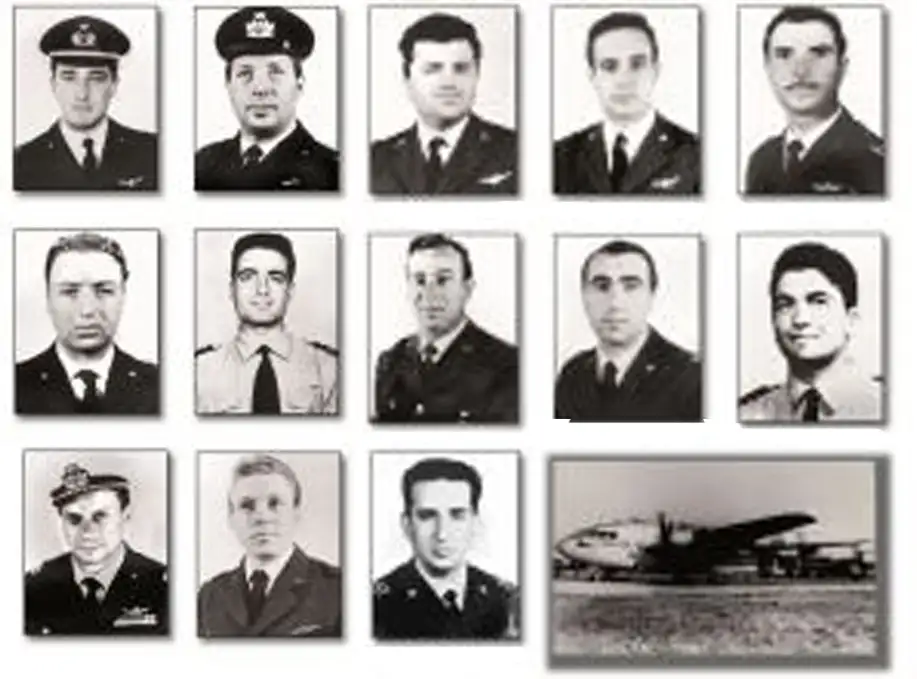In this article we look at one incident that happened sixty years ago in the Congo in Nov 1961 when Italy suffered thirteen casualties in a mass murder in what has been called the Kindu Massacre. This event shows that UN peacekeepers who might not be considered to be on the frontline were open to the dangers of the volatile situation in the Congo. It is worth noting that this happened during the interval between the fighting in Katanga Province during Operation Morthar (13 – 21 Sep 1961) and Operation Unokat (05 – 20 Dec 1961).
Kindu in Kivu Province would be known to veterans of the first Irish unit to serve in the Congo as B Coy 32 Inf Bn had been stationed there from 30 Jul to 13 Oct 1960.
In Nov 1961 the UN garrison at Kindu had a total of 206 personnel from Malaya drawn from one Coy of 6 Royal Malayan Regt and a Tp of Ferret Scout Cars from 2 Recce Regt.
The Italian Air Force Unit in ONUC.
The UN Air Transport Division was based at N’djili airport near Leopoldville and in Nov 1961 the unit had 461 military personnel made up by aircrew and ground staff from Argentina, Brazil, Canada, Denmark, India, Italy, Norway and Sweden.
The Italian unit was 46 Aerobrigata from the Italian Air Force, it had seventy personnel and operated ten Fairchild C119 aircraft. The C119 all-weather medium transport twin-engine aircraft was designed for transport operations, air resupply, paratroop operations and medical evacuation. Because of its cargo-carrying capacity, it was known as the Flying Boxcar.
The Massacre.
On Saturday 11 Nov 1961, two C119s were on a routine flight delivering two Ferret Scout Cars from Kamina Base to the Malayan contingent at Kindu in Kivu Province. The Irish unit, 1 Inf Gp at Kamina Base had been reinforced by four Ferret Scout Cars during Operation Morthor in September and these were being returned to their parent unit A Sqn, 2 Recce Regt, Malayan Special Force at Kindu.
The aircraft were each crewed by six men and a medical officer was also on board one aircraft. They were scheduled to finish their tour of duty with ONUC on 23 Nov 1961. The arrival of the aircraft had been communicated in advance to the Armée Nationale Congolaise (ANC). The aircraft landed after 1400 hours and after unloading, the thirteen Italians were driven by Maj Daud, OC B Coy 6 Royal Malayan Regt and commander of the UN garrison, to the Malayan dining hall, 2 Km from the airport, for a meal.
The ANC used Kindu as a staging post for troops being deployed from Stanleyville in Orientale Province to North Katanga and 935 ANC personnel were in Kindu on 11 Nov.
At around 1600 hours, a party of forty ANC arrived at the dining hall, twenty six entered the building, they were in an agitated state and under the influence of alcohol and/or other volatile substance. The Medical Officer tried to reason with them through French, the ANC said he was a Belgian speaking Flemish and proceeded to attack and beat the Italians with rifle butts. Approximately 200 more ANC troops arrived at the scene and the Malayans were overwhelmed and disarmed. The Comd of 3 Gp ANC, Col Vidal Pakasa arrived and tried to intervene to free the Italians but he was man-handled by his own troops and he fled back to the airport. The Medical Officer attempted to flee through a window but he was shot dead. His body and the twelve others were put on vehicles and taken to the town prison. They were again beaten and they were shot dead that night in their cells, the bodies were then butchered.
On the following morning, police Superintendent Amisi Lukanyaka ordered a police Chief Sergeant to remove what remained of the mutilated remains from in front of the prison and to arrange burial. The remains were buried by a work party of prisoners in two pits at Tokolote cemetery some 4 Kms from Kindu. The ANC besieged the Malayan garrison for two weeks and following negotiations between Central Government and ONUC they withdrew from the airport and returned to their camp. On 25 Nov, the two C-119s were recovered and were flown to Leopoldville.
ONUC and Congolese Central Government Inquiry.
Sture Linnér (Sweden), the Officer-in-Charge of ONUC proposed to the Central Government of the Republic of Congo that a joint investigating committee be established by ONUC and the Government. Because of the security situation at Kindu, this Mixed Commission of Inquiry was established in Stanleyville on 19 Dec 1961. The purpose of the commission was to investigate the circumstances in which thirteen Italian UN personnel were assassinated in Kindu on 11 Nov 1961 by ANC soldiers; to identify the persons guilty of these murders and other crimes in this connection; to ensure the arrest of the culprits in cooperation with the competent authorities; to submit a report on the findings to the Prime Minister and to the UN.
The ANC personnel involved in abducting the Italians were identified by the Malayan commander as belonging to 2 Coy 6 Bn under the command of a Lt Michel Urera. This unit was deployed into northern Katanga in order to obstruct any proper inquiry into the massacre. Twenty one personnel from 20 Bn and nine from 7 Bn were charged in relation to the killings, two other soldiers were found in possession of human flesh, two others were found in possession of the wrist watches and dollars belonging to Malayan officers.
The Mixed Commission of Inquiry found its final report on 18 Jul 1962 that none of the thirty soldiers from 7 Bn and 20 Bn had taken part in the massacre, it found the following ANC persons guilty of involvement in the killings: Col Pakasa (Comd 3 Gp ANC), Maj Malungi (Kindu Grn Comd), Lt Michel Urera (OC 2 Coy 6 Bn) and the two soldiers found in possession of human flesh, Ptes Vincent Hakizimana and Ferdinand Osombo. The commission’s investigation did not result in the apprehension and punishment of the actual culprits and no one was tried in court for the murders.
Recovery of the Remains.
On 20 Feb 1962, two doctors from the Austrian Red Cross and two Italian Air Force NCOs, who were escorted by troops from the Ethiopian battalion, located the graves at Tokolote cemetery. The soil in the cemetery preserved the remains, the Italian NCOs, Staff Sgt R Battistutti and Staff Sgt M Meschi, identified the thirteen remains and they were photographed by a UN photographer. On 23 Feb 1962, a C-119 crewed by Lt Col L Picone and Maj Poggli, flew from Leopoldville to Kindu. The remains were exhumed and transported to Kindu airport for onward transport to N’djili airport Leopoldville.
Memorial Service and Funeral.
On 10 Mar all ONUC posts held a memorial service and formal parade for the Italian fatalities, this took place as the formal ceremony was being held at N’djili airport. The HQ ceremony included solemn requiem mass on the tarmac with the thirteen coffins placed in front of a Globemaster aircraft, wreaths were laid by the Officer-in-Charge of ONUC Robert Gardiner (Ghana), the Force Commander Lt Gen Sean MacEoin, the Italian Base Comd, Col N Pasqualli, ONUC Air Chief, Air Commodore Morrison (Canada), the Congolese Prime Minister, Cyrille Adoula and the Italian Ambassador, Piero Franca. Following two minutes silence, the Guard of Honour consisting of 100 personnel from the Queen’s Own Nigerian Rifles presented arms, the last post was played, three volleys were fired and reveille was sounded.
A US Air Force Douglas C-124 Globemaster transported the coffins to Wheelus Air Base in Libya where they were transferred to a Lockheed C-130 Hercules for the flight to Pisa Airport in in Tuscany, Italy on 11 Mar 1962.
In 1994 the thirteen Italians were awarded the Gold Medal of Military Valor. A monument to the Kindu Massacre victims was erected of Leonardo da Vinci-Fiumicino Airport in Rome and a second monument was erected in Pisa.
Crew of India 6002 Callsign Lyra 5.
Onorio De Luca age 25
Filippo Di Giovanni age 45
Armando Fabi age30
Giulio Garbati age 22
Giorgio Gonelli age 31
Antonio Mamone age 28
Martano Marcacci age 27
Nazzareno Quadrumani age 42
Francesco Paga age 31
Silvestro Possenti age 40
Francesco Paolo Remotti age 29
Nicola Stigliani age 30
Maj Amedeo Parmeggiani (43) Detachment Commander, Pilot.


